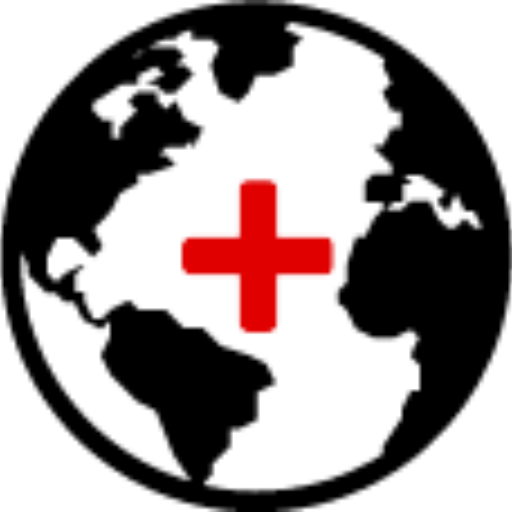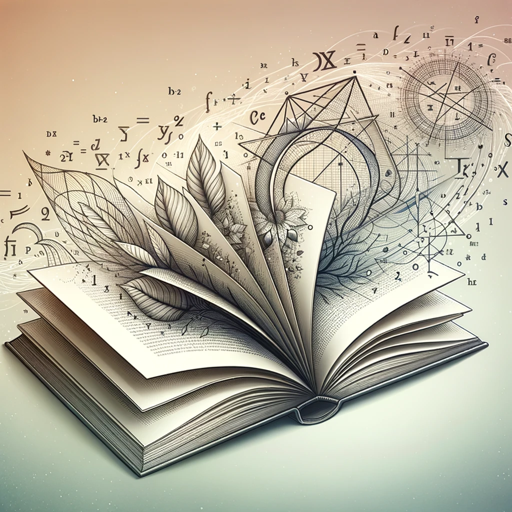Topology-mathematical topology insights
AI-powered Topology and Geometry Insights
Explain the concept of a manifold.
What is homotopy theory?
How does topology differ from geometry?
Describe the properties of a Mobius strip.
Related Tools
Load More
Geo+
Your assistant for quick geospatial analysis
ChatGIS
Experto en GIS, PostgreSQL, PostGIS, programación y cartografía

TikZ LaTeX Expert
Master of TikZ diagrams and LaTeX presentations

Spis treści
Wygeneruj FAQ i stwórz spis treści

CS AI SEO Topic Map GPT
Use this GPT to create a semantic topic map built on the principles of entity SEO. If you want a topic map that creates the full map with a click of a button while providing topic map visualizations, go to my tool --> https://contentsprout.ai

GIS MAPPING - GPT
Leading AI Agent resource in geographic information system (GIS), offering comprehensive knowledge, insights, and guidance of integrated computer hardware and software that store, manage, analyze and visualize geographic data. https://gismapping.ai
20.0 / 5 (200 votes)
Introduction to Topology
Topology is a branch of mathematics focused on the properties of space that are preserved under continuous transformations. Unlike geometry, which deals with exact shapes and sizes, topology is concerned with the qualitative properties of geometric objects. For example, a square and a circle are considered topologically equivalent because one can be transformed into the other without tearing or gluing. The primary design purpose of topology is to study spatial properties and relationships that remain invariant under continuous deformations. Common concepts in topology include open and closed sets, continuity, compactness, and connectedness. In scenarios, topology helps in understanding and solving problems related to the deformation of objects, the connectivity of networks, and the behavior of spaces under continuous transformations.

Main Functions of Topology
Homeomorphism
Example
Determining if a coffee cup and a doughnut are topologically equivalent.
Scenario
In practical applications, homeomorphisms can be used in computer graphics to morph one shape into another, ensuring that the transformation is smooth and continuous. This is crucial in animation and modeling.
Compactness
Example
Proving that a closed interval [a, b] in the real numbers is compact.
Scenario
Compactness is vital in analysis and optimization problems. For instance, in operations research, compactness ensures that a feasible solution space is bounded and closed, guaranteeing the existence of an optimal solution.
Fundamental Group
Example
Calculating the fundamental group of a torus.
Scenario
In robotics, the fundamental group helps in path planning algorithms by analyzing the possible loops and ensuring that a robot can navigate through a space without encountering obstacles or dead ends.
Ideal Users of Topology Services
Mathematicians and Academics
Researchers and educators in pure mathematics who require a deep understanding of topological concepts for theoretical studies and teaching purposes. They benefit from topology by developing new theories, proving theorems, and educating the next generation of mathematicians.
Engineers and Computer Scientists
Professionals in fields such as computer graphics, data analysis, and robotics. These users leverage topology for practical applications like 3D modeling, data visualization, network analysis, and algorithm development, ensuring efficiency and effectiveness in solving complex spatial problems.

Guidelines for Using Topology
Step 1
Visit aichatonline.org for a free trial without login, also no need for ChatGPT Plus.
Step 2
Familiarize yourself with the interface and available features. Take the time to explore the various sections and tools provided.
Step 3
Identify your specific use case, whether it's academic writing, research, problem-solving, or another task. Tailor your interactions with Topology based on these needs.
Step 4
Engage with Topology by asking detailed and specific questions. Utilize the tool's deep understanding of mathematical topology and geometric concepts to get precise answers.
Step 5
Review and apply the information provided by Topology. Use the insights and explanations to enhance your understanding and complete your tasks effectively.
Try other advanced and practical GPTs
The Social Profil Scanner
AI-powered LinkedIn Profile Critique

True Crime
AI-powered insights into true crime.

3D Animated Character Mentor
AI-powered 3D character design made easy

Ontraport Assistant
Automate CRM tasks with AI.

Caricature Artist
AI-Powered Caricature Art for Everyone

Book Insighter
AI-powered insights for better book comprehension

System Dynamics
AI-powered System Dynamics for Everyone
Sprüche / Zitate Ersteller (250 Stück)
Generate 50 unique quotes with AI.

Prop Gen
AI-powered freelance proposal assistant.

Contract
AI-powered contract insights and analysis

K Motion Prompt Baker
Transform Text into Dynamic Animations

Logos Copfy
AI-powered custom logo creation

- Academic Writing
- Research
- Problem Solving
- Tutorials
- Concept Learning
Common Questions About Topology
What is the primary focus of Topology?
Topology is designed to provide insights, explanations, and discussions on topics related to mathematical topology and geometric concepts, emphasizing precision and clarity.
Can Topology handle complex mathematical theories?
Yes, Topology is adept at handling complex mathematical theories, offering detailed explanations and engaging in discussions that require a deep understanding of topology and geometry.
How should I ask questions to get the best results from Topology?
For optimal results, ask detailed and specific questions related to mathematical topology or geometric concepts. This allows Topology to provide precise and comprehensive answers.
What are some common use cases for Topology?
Common use cases include academic writing, research, problem-solving in mathematics, and gaining a deeper understanding of geometric and topological concepts.
Are there any prerequisites for using Topology?
There are no prerequisites for using Topology. However, having a basic understanding of mathematical concepts can help you make the most of its features and capabilities.